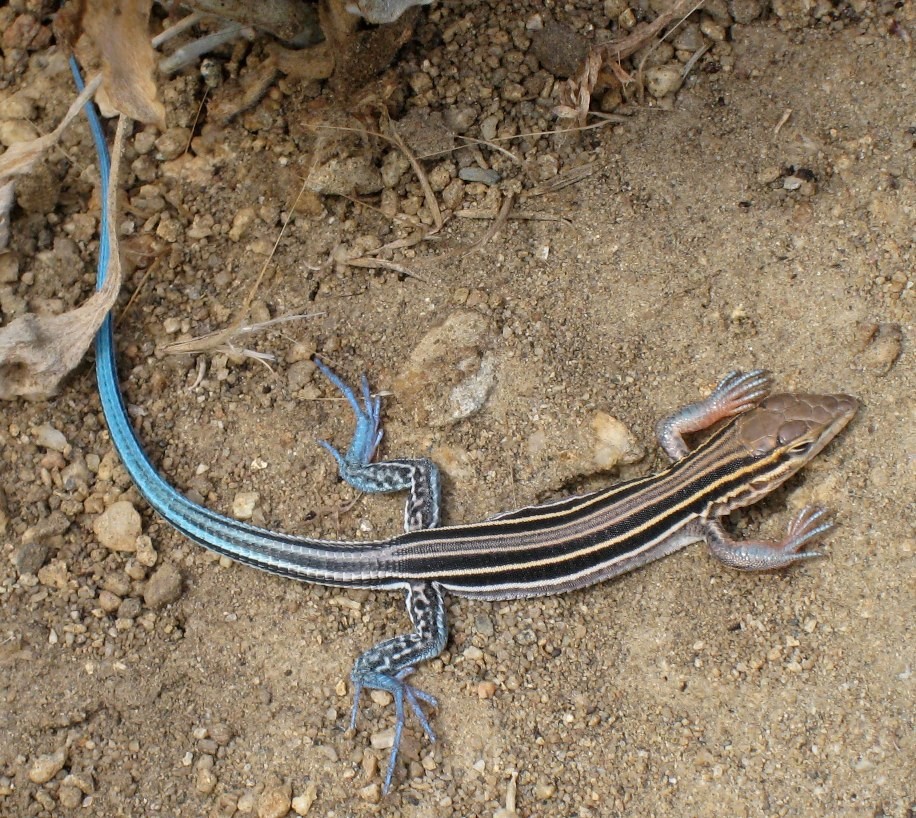Orange-throated racerunner
A species of Whiptail lizards Scientific name : Aspidoscelis hyperythra Genus : Whiptail lizards
Orange-throated racerunner, A species of Whiptail lizards
Scientific name: Aspidoscelis hyperythra
Genus: Whiptail lizards
Content
Description General Info
 Photo By Laura Camp , used under CC-BY-SA-2.0 /Cropped and compressed from original
Photo By Laura Camp , used under CC-BY-SA-2.0 /Cropped and compressed from original Description
A. hyperythrus has five or six light-colored stripes down a black, brown, or grey dorsal side. The middle stripe may be forked at both ends. The species is whitish-yellow or cream on the venter, and has an orange throat (females and juveniles may lack this character). Its head is yellow-brown to olive-colored, and its tongue is forked and flicked continually. It has a snout-to-vent length of 5–7.2 centimetres (2.0–2.8 in). Juveniles of this species have cobalt blue legs and tails. The entire ventral surface of males, including the tail, may be orange, although gravid females may also have some orange especially lining the lower jaw. The colors are most distinct in the breeding season. Males have larger femoral pores than females. 
General Info
Lifespan
5-10 years
Diet
Orange-throated racerunner sustain primarily on an insectivorous diet, favoring a rich consumption of arthropods. They actively forage for beetles, spiders, and caterpillars, displaying a particular preference for eating ants.
Appearance
Orange-throated racerunner is a small, slender lizard with smooth, shiny scales. It has a striking coloration of dark brown or black with cream or white spots and stripes, giving it a distinctive speckled appearance. Males often display brighter colors, with hints of red or orange, especially during breeding season. Its tail is long and tapered, often colored brightly at the base. There are no notable differences in appearance with age or between subspecies.
Behavior
Orange-throated racerunner are predominantly terrestrial and diurnal, showcasing their versatility in foraging and survival in arid environments. Their hunting strategy involves active searching, swallowing prey whole. Elusive loners, their territorial disputes tend to consist of brief chases. These reptiles also exhibit distinctive thermoregulation behavior, frequently basking in the sun.
Population
Decreasing
Scientific Classification
Phylum
Chordates Class
Reptiles Order
Lizards and snakes Family
Whiptails Genus
Whiptail lizards Species
Orange-throated racerunner